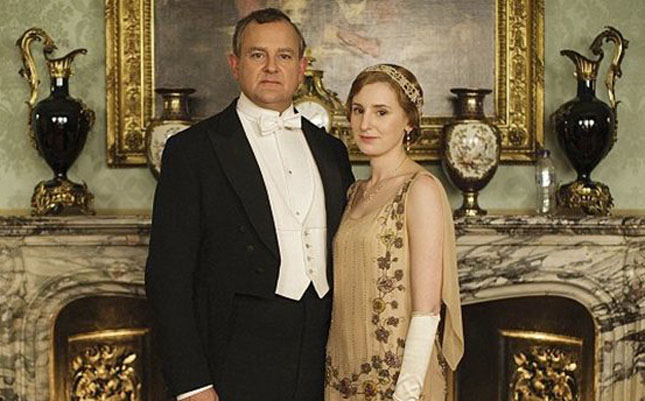Films that are set in the past are often judged for their authenticity. The “goofs” section of IMDb is overrun with anachronisms: this porcelain wasn’t made until six years later; or this character shouldn’t have shaved underarms. However, anachronisms can actually be useful for bringing the past to life. It’s hard for an audience to invest in the outcome of completely dead and buried characters. Screenwriters write in the present tense and, for the most part, audiences watch films in the present tense too.
The Past is Important
Even period films that have present day framing devices, like SAVING PRIVATE RYAN or TITANIC, use them to show that the past is important and lives on through people and their memories.
No one will remember Walker. No one will remember men who lose.
Anachronisms have their uses. A film can teach the audience more about certain historical eras by deliberately getting a few selected details wildly, absurdly “wrong” than by getting them right. Call it the Big Anachronism: The detail that’s so over-the-top wrong that the audiences start wondering why the filmmaker did it.
– A. Bowdoin Van Riper, Hollywood, History, and the Art of the Big Anachronism
WALKER is a film by cult director Alex Cox (REPO MAN, SID AND NANCY) with a screenplay by Rudy Wurlitzer. It’s about the life of William Walker, a 19th Century American who made himself dictator of Nicaragua.
However, the film is full of deliberate anachronisms: automatic rifles, helicopters, a car, and cameos from Coca-Cola and Marlboro cigarettes.
Cox uses these anachronisms as a kind of distancing effect, preventing the audience from identifying with the characters and believing in the time period. Instead, they force the viewer to consider the parallels between Nicaragua in the 1850s and the 1980s, including the American role in the then-ongoing Contra War.
Such a didactic approach naturally has its risks. WALKER was a hit in Nicaragua but was received poorly in the US, and Alex Cox never directed a film for a Hollywood studio again. Still, it has been reappraised recently, including a release from the Criterion Collection.
Writer-director Sofia Coppola made the (in)famous choice to fill the soundtrack of MARIE ANTOINETTE with post-punk songs, along with the classical music more traditional for the genre. Adam Ant inspired the look of one character. She even hid some modern Converse shoes in the background of one shot.
Coppola uses these anachronisms in a different way than Cox does in WALKER. She wants to bring the audience into the world of the film rather than taking them out of it.
To contemporary audiences, Marie Antoinette is a distant historical figure. Coppola relates to her and depicts her as a modern disaffected teenaged girl, living a privileged but stifled life, exploited politically.
Many characters in historical films seem somehow aware that they are living in the past. Marie seems to think she is a teenager living in the present, which of course she is — and the contemporary pop references invite the audience to share her present with ours.
Cox and Coppola’s approaches are not appropriate for every period piece, but their boldness is admirable.
In a 2000 column, William Safire played a slightly tongue in cheek game of “Gotcha!” His readers sent in examples of anachronistic dialogue in historical films and TV.
One example is the use of “scam” and “scamming” in this scene from SCHINDLER’S LIST:
Of course, no-one asks why these German and Polish characters are speaking in English in the first place. This is a common convention that audiences have accepted as a part of their suspension of disbelief.
The result has slightly less resemblance to reality, but it’s also easier for English-speaking audiences to follow. The same applies to the word “scam.”
For the majority of the audience who aren’t experts in etymology, this word isn’t going to take them out of the film. It does provide an emotional charge to the scene that a more accurate synonym might not. For example, compare it with an alternative:
Where’s the money in this, where’s the swindle?

Factual accuracy is not a bad thing, and research can be a very important part of the process before beginning to write. There might be some great character, event or even piece of slang that has yet to be effectively depicted on screen.
However, films shouldn’t be hamstrung by the past. As much as it might frustrate historians, they aren’t and shouldn’t be history lessons.
If the choice is between total accuracy (impossible) and helping the audience understand the characters, the drama and their emotions, the latter will win.
When filmmakers understand the effects anachronisms have and use them deliberately, they can serve this purpose.
In period films, authenticity is measured in feelings as well as facts.
If you enjoyed this article, why not check out our article OPINION: Support Your Supporting Characters?
What did you think of this article? Share it, Like it, give it a rating, and let us know your though in the comments box further down…
Struggling with a script or book? Story analysis is what we do, all day, every day… Check out or range of services for writers & filmmakers here.
Get *ALL* our FREE Resources
Tackle the trickiest areas of screenwriting with our exclusive eBooks. Get all our FREE resources when you join 60,000 filmmakers on our mailing list!

